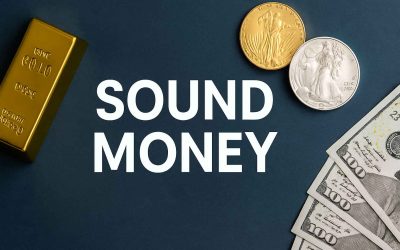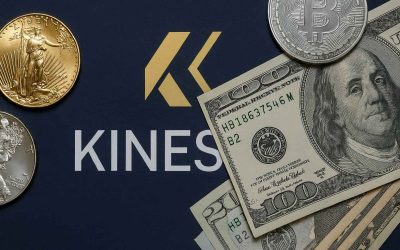Many people discover Goldback and other aurum trade instruments, see the price compared to the COMEX spot price of gold, and balk: “It’s 100% over spot—why would anyone pay that?” The hesitation is understandable if you compare a hyper-fractional, ready-to-spend note to a wholesale quote for a 400-oz London Good Delivery bar. But that’s not an apples-to-apples comparison.
This article explains, in plain terms, where the premium comes from, what it buys you, and how to think about total cost and utility when evaluating aurum notes for everyday transactions or small savings.
Quick vocabulary note: to keep things precise, this article uses “notes,” “trade instruments,” or “bearer instruments” for aurum products. We intentionally avoid calling them “currency” because, well, legality.
“Spot” is a wholesale reference price, not a finished-goods price
Spot gold is a quotation for large, professional-market transactions under specific assumptions: size (often 100–400 oz), purity, location, and settlement terms. It’s the raw commodity price. Finished, retail products such as coins, small bars, or aurum notes, always trade above spot because they embody additional costs and utilities:
- Fabrication and finishing
- Security features and anti-counterfeiting technology
- Packaging, handling, and logistics
- Distribution, retail margin, and customer service
- Regulatory, insurance, and compliance overhead
- Market-making and buyback infrastructure
Even a standard 1-gram bar or a 1/10 oz gold coin carries a substantial premium over spot per unit of gold because small is expensive to manufacture and distribute. Aurum notes are the extreme end of “small and spendable.” That’s the entire point, and the root of the premium.
The unique manufacturing reality of aurum notes
Aurum notes aren’t simply “thin gold.” They’re engineered trade instruments typically made by:
- Vacuum deposition of micro-thin gold layers onto a specialized polymer substrate.
- Precise mass control to deliver milligram-scale gold weights consistently.
- Lamination & encapsulation to protect the gold and preserve visual integrity through normal handling.
- Embedded design & security features such as micro-printing, optically variable elements, and serials to deter counterfeiting and enable rapid authentication.
- Quality control at hyper-fractional tolerances, which is labor and equipment intensive.
This is a precision manufacturing process, closer to producing secure documents or micro-electronics than striking a bullion round. At milligram levels, the cost to make one physical, durable, verifiable unit is dominated by fabrication, not the raw gold value.
In short: aurum notes move gold into the everyday world, into wallets, pockets, and cash drawers, without the fragility or impracticality of loose flakes or shavings. That transformation from commodity to spendable bearer instrument is what you’re paying for.
Where the premium goes (a realistic cost stack)
While each issuer’s stack differs, a representative breakdown looks like this:
- Raw metal input (the actual gold content).
- Fabrication & security: vacuum deposition runs, yield loss, lamination, print/security features, QA.
- Processing losses & scrap recovery, which is inevitable at micro-scale.
- Packaging & serialized tracking, as well as tamper evidence, authenticity cues.
- Regulatory & insurance surrounding handling precious metal inventory and finished instruments.
- Distribution & logistics for the secure transport, regional warehousing, and pick/pack operations.
- Market making & buyback program costs – liquidity is a service.
- Retail margin which keeps dealers in the ecosystem to support availability and buybacks.
Important perspective: these costs are mostly per-unit, not per-ounce. When you split an ounce of gold into hundreds or thousands of durable, secure, authenticated units, the per-unit fabrication burden dominates.
“But it’s 100% over spot!”—understanding the percentage trap
Expressing premium as a percentage of spot can be misleading at small scale. If a note contains a tiny amount of gold, say tens of milligrams, the raw gold cost is only a few dollars. Add $5–$10 of fabrication, distribution, and security to make it usable like cash, and that looks like a huge percentage premium. The absolute dollar premium, however, may be comparable to the premium you already accept on a 1-gram bar, a 1/10 oz coin, or even a simple wire transfer fee.
Key insight: percentage premium balloons as unit size shrinks, even if the absolute premium is modest. That’s inherent to micro-denominations.
What the premium buys you: utility
Think of the premium as a one-time prepayment for a bundle of utilities that bullion simply doesn’t provide at the same scale:
- Spendability in tiny increments. You can hand someone a small, self-contained, recognizable gold claim without scales, assays, or shaving off dust.
- Durability and verifiability. Engineered notes tolerate normal handling and incorporate anti-counterfeiting features.
- Fungibility in everyday life. Notes are discreet, stackable, and countable like cash, not like fragile leaf or a baggie of flakes.
- Liquidity pathways. Issuers and dealers maintain a buy/sell network. That liquidity infrastructure is part of what you pay for.
- A social contract for acceptance. Widespread recognition and consistent presentation make it more likely a shopkeeper will accept a note than a sliver bar. Recognition is a utility.
In economic terms, that premium is not just “extra profit”—it’s the cost of transforming gold into a usable payment-adjacent trade instrument for the smallest transactions.
How utility amortizes the premium over time
For savers or spenders, it helps to view the premium as amortizable across uses:
- Scenario A (Collector/Saver): You buy notes and don’t spend them. Your benefit is portability, divisibility, and potential resale via a buyback program. The premium is recovered (partially or fully) if market demand persists and the resale pathway is functioning.
- Scenario B (User/Spender): You circulate the notes; you tip your barber, pay a neighbor, gift, or barter. Each time a note facilitates a frictionless micro-payment without bank rails, card fees, or KYC friction, you’ve extracted real utility that a raw spot ounce cannot deliver in practice. The more you use them, and keep them in local circulation, the more that upfront fabrication premium is spread across successful transactions.
A helpful analogy is a prepaid transit card: the card itself costs money to issue but unlocks efficient, repeated rides. The issuance cost isn’t “wasted”, it enables the system.
Comparing to alternatives
1/10 oz coins or tiny bars.
- Pros: familiar, widely recognized.
- Cons: often high percent premiums; less convenient for less than $20 transactions; require protective capsules; slower to authenticate in a retail setting.
Electronic rails (bank cards, apps).
- Pros: convenience, low visible fees to consumers.
- Cons: fees exist (borne by merchants), privacy tradeoffs, dependency on third parties, outages, chargeback risk.
Raw bullion shavings/flakes.
- Pros: closer to spot price.
- Cons: impractical, messy, non-standard, prone to disputes, requires scale/assay tools.
Aurum notes occupy a unique niche: micro-denomination, offline-capable, bearer-style instruments with built-in recognizability and durability, a form factor purpose-built for real-world exchanges.
Thinking in total cost of ownership (TCO)
When evaluating aurum notes, shift from “percent over spot” to total cost of ownership for the job you need done:
- Job: enable small, private, in-person value transfer, gift-giving, or local trade, using gold, with zero electronics.
- Inputs: fabrication + security + distribution + liquidity support.
- Outputs: divisibility, recognizability, durability, spendability, and buyback pathways.
If a $6–$12 absolute fabrication/distribution cost per note (illustrative) unlocks years of reliable micro-transactions and local liquidity, that can be economically rational, even if it shows as a large percentage over COMEX spot.
Addressing common objections
“It’s not ‘pure investment’ gold if I’m paying a premium.”
Correct! Aurum notes are hybrid devices: part metal value, part monetary utility. If your goal is the lowest-cost, maximal-ounce stacking, larger bars or coins are more efficient. If your goal includes micro-payment capability, gifting, or local circulation, aurum notes are optimized for that.
“No one will take them back.”
A healthy ecosystem depends on dealer networks, issuer buybacks, and clear spreads. Where those are established, liquidity exists by design. Spreads will reflect real costs, as they do with coins/bars.
“Why not wait until premiums drop?”
Fabrication costs are tied to technology, yields, labor, compliance, and volume. Over time, scale and process improvements can help, but micro-denominations will always carry higher per-ounce premiums than wholesale metal. That’s physics and economics, not greed.
“I’m paying twice the gold price.”
In absolute dollars, you’re buying two things: (1) the gold, and (2) a durable, authenticated, micro-denominated form factor that behaves like a spendable bearer note. The second is a real product with real costs and lasting value to users.
Practical guidance for buyers and users
- Match tool to task. Use larger bullion for pure stacking; use aurum notes where spendability and small change matter.
- Understand spreads. Ask dealers/issuers about buyback policies and expected bid/ask spreads. Treat that as the cost of liquidity, just like FX or card processing spreads.
- Circulate intentionally. If your goal is adoption, use the notes; tip, gift, and encourage local merchants. Circulation amortizes the premium through real utility.
- Store properly. Keep notes flat and protected; the product is engineered for durability, but care extends life and resale quality.
- Communicate value simply. When introducing others, emphasize divisibility, durability, recognizability, and offline usability, not just metal content.
A simple numerical lens (illustrative only)
Suppose a micro-denominated note has $4 of gold content at today’s spot and sells for $9.
- Absolute premium: $5.
- If that note facilitates ten small transactions (tips, barters, gifts) that would have otherwise required bank rails, card fees, or awkward change handling, you’ve effectively spread the $5 over ten wins, with fifty cents of “utility cost” per successful use, plus the gold value that remains.
- If you later sell back into a functioning buyback network for, say, $6.50, you’ve recovered $2.50 of the premium, reducing your net “utility cost” further.
The point isn’t the specific numbers, it’s the framework: evaluate both metal value and form-factor utility over time.
Bottom line
- Spot is wholesale. Finished, micro-denominated, secure, and durable notes are a different product category.
- Small costs more. Hyper-fractional, tamper-resistant, authenticated instruments carry unavoidable per-unit costs.
- Premium = utility. You’re buying spendability, divisibility, recognizability, liquidity support, and durability; the things that make tiny amounts of gold useful in daily life.
- Choose by purpose. For stacking ounces, buy larger bullion. For using gold in the real world – gifting, tipping, small trades – aurum notes exist to do that job.
When viewed through the lens of total cost for the task at hand, the premium over spot isn’t a defect. It’s the price of turning raw metal into a practical, micro-denominated trade instrument, and for many use cases, that’s exactly the value proposition.







0 Comments